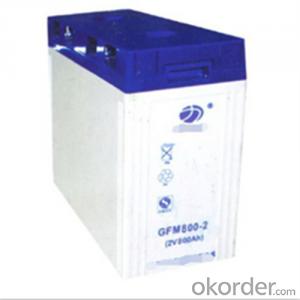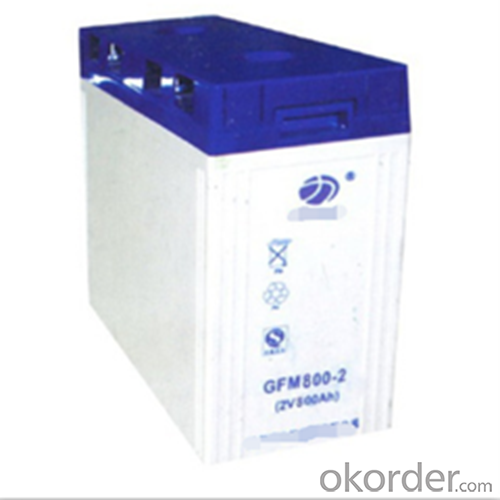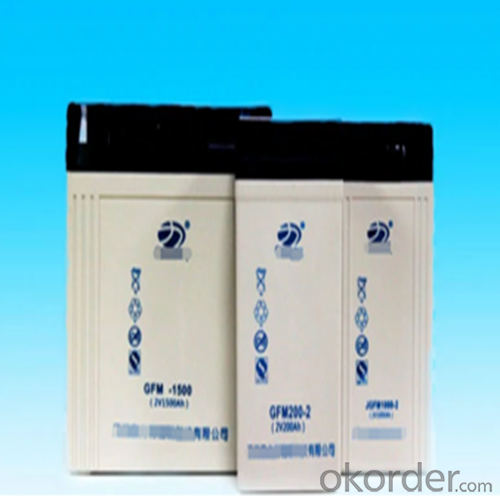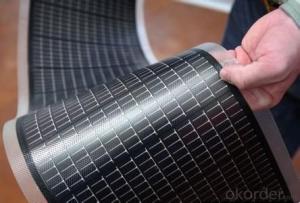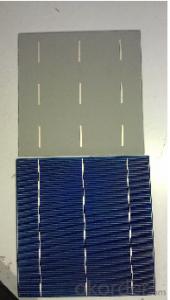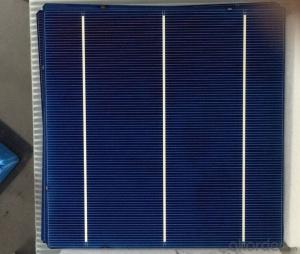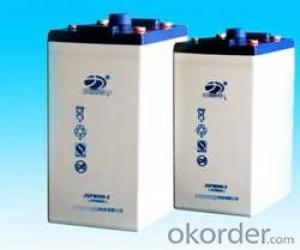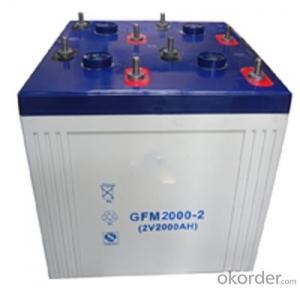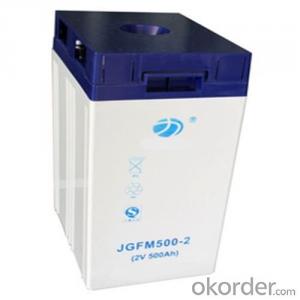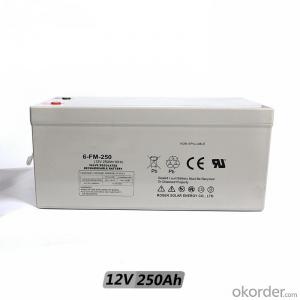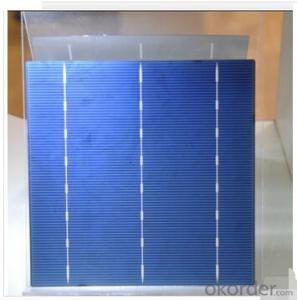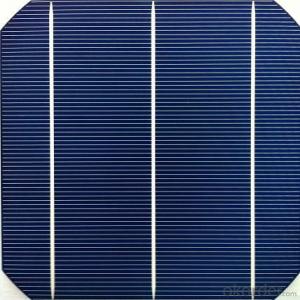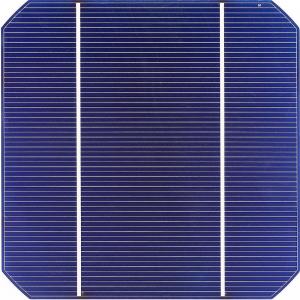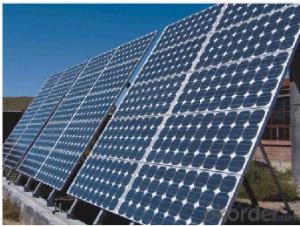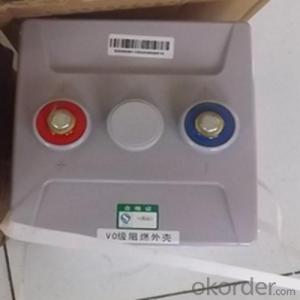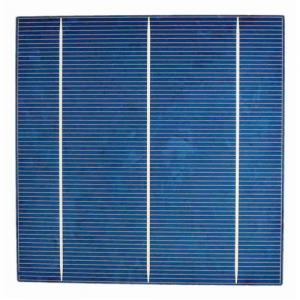Nanostructured Solar Cells Compatible Lead-Acid Battery GFM Series 2V 100~3000AH
- Loading Port:
- China main port
- Payment Terms:
- TT OR LC
- Min Order Qty:
- 1 pc
- Supply Capability:
- 100000 pc/month
OKorder Service Pledge
OKorder Financial Service
You Might Also Like
Structure of Product Descrtption:
What is the product?
· Precision explosion relief valve shall be adopted
· Advanced wrapping technology and assembly technology
· Designed life is fifteen years,excellent performance of battery in low temperature and superiority in consistence and stability
· Can be used at vertical or horizontal orientation
· Balanced design for both floating and cyclic operation
· Low self-discharge rate and long shelf life
· Connecting terminal adopts stainless steel bolt,thus it has the characteristics of high strength and non-deforming
· Design with patented corrosion resisting alloy and thickened plate
What is the purpose of the product?
· Data Centre (High Rate UPS)
· Telecommunication
· Banks & Financial Centre
· Hospital& Testing Laboratories
· Power Generation Plants
· High Power Backup Supply
· Design with patented corrosion resisting alloy and thickened plate
What advantages do products have ?
· Stable quality&high reliability
· Sealed construction
· Environmentally friendly
· Maintenance-free operation
· Low pressure venting system
· Heavy duty grid
· Low self discharge
Main feature of the product:
*safety and reliable
*environmental friendly and fast delivery
*low self diacharge

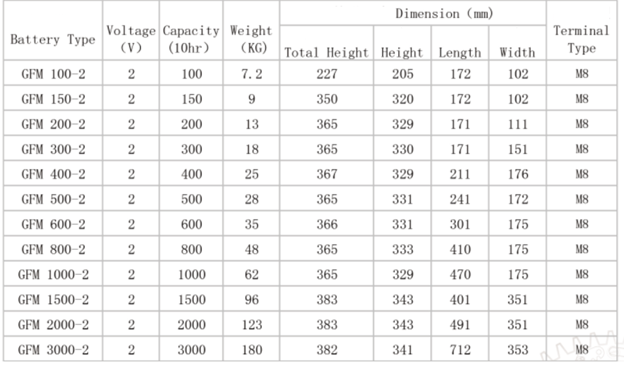
FAQ:
*Question:What’s price per watt?
Answer: It’s depends on the quantity, delivery date and payment terms of the order. We can talk further about the detail price issue. Our products is high quality with lower price level.
*Question:Can you do FOB for us?
Answer:Yes, we can do it for you .
*Question: How long can we receive the product after purchase?
Answer:In the purchase of product within three working days, We will arrange the factory delivery as soon as possible. The perfect time of receiving is related to the state and position of customers. Commonly 7 to 10 working days can be served.
- Q: Can solar cells be used for powering water treatment plants?
- Yes, solar cells can be used for powering water treatment plants. Solar energy can be harnessed and converted into electricity to power the various processes and equipment required for water treatment. This renewable energy source offers a sustainable and environmentally friendly solution for powering water treatment plants.
- Q: What is the maintenance required for solar cells?
- The maintenance required for solar cells primarily involves regular cleaning to remove any dirt, debris, or grime that may accumulate on the surface of the panels. Additionally, it is important to inspect the panels for any damage, such as cracks or loose connections, and address them promptly to ensure optimal performance. Other routine maintenance tasks include checking the inverters, monitoring the system's performance, and keeping the surrounding area free from shading objects. Overall, solar cell maintenance is relatively minimal compared to other energy sources, making it a cost-effective and sustainable choice for power generation.
- Q: Can solar cells be used for powering space missions?
- Yes, solar cells can be used to power space missions. Solar cells, also known as photovoltaic cells, convert sunlight directly into electricity. They have been widely deployed in space missions to provide power for satellites, space probes, and even space stations like the International Space Station (ISS). Solar cells are a reliable and efficient source of renewable energy in space, as they can generate electricity even in the absence of an atmosphere.
- Q: Can solar cells be used in air conditioning systems?
- Yes, solar cells can be used in air conditioning systems. Solar cells can generate electricity from sunlight, which can then power the air conditioning unit, reducing the reliance on traditional energy sources and making the system more environmentally friendly and cost-effective.
- Q: I studied very hard at school, but I just can not figure out how solar cells work, anybody can help me with that?
- You just need to keep on working and doing experiments, and you will work it out eventually.
- Q: How do solar cells impact energy independence?
- Solar cells impact energy independence by providing a renewable and sustainable source of electricity. By harnessing the power of the sun, solar cells reduce reliance on fossil fuels and foreign energy sources, promoting self-sufficiency and reducing the need for imports. This enables countries and individuals to generate their own clean energy, reducing dependence on traditional energy grids and increasing energy independence.
- Q: Where can I find more information about the work process of solar cells
- The working process of solar cell is a bit complicated to describle.
- Q: What is the role of batteries in solar cell systems?
- The role of batteries in solar cell systems is to store the excess energy generated by the solar panels during the day for use during periods of low or no sunlight, such as at night or during cloudy weather. This allows for a continuous and reliable power supply from solar energy.
- Q: What is the impact of bird droppings or debris on solar cell performance?
- Bird droppings or debris can significantly impact the performance of solar cells. When bird droppings or debris accumulate on the surface of the solar panels, they can block sunlight from reaching the cells, reducing their efficiency. This shading effect can result in a decrease in electricity generation and overall output. Additionally, bird droppings contain corrosive substances that may damage the protective coatings on the solar panels, leading to long-term performance degradation. Therefore, regular cleaning and maintenance are essential to ensure optimal solar cell performance.
- Q: Can solar cells be used for powering electric vehicles in motion?
- Yes, solar cells can be used to power electric vehicles in motion. Solar panels can be installed on the roof or body of the vehicle to capture sunlight and convert it into electricity, which can then be used to power the vehicle's electric motor. While the amount of power generated by solar cells may not be sufficient to completely run the vehicle, it can supplement the battery's charge and increase the overall range of the electric vehicle.
Send your message to us
Nanostructured Solar Cells Compatible Lead-Acid Battery GFM Series 2V 100~3000AH
- Loading Port:
- China main port
- Payment Terms:
- TT OR LC
- Min Order Qty:
- 1 pc
- Supply Capability:
- 100000 pc/month
OKorder Service Pledge
OKorder Financial Service
Similar products
Hot products
Hot Searches
Related keywords
